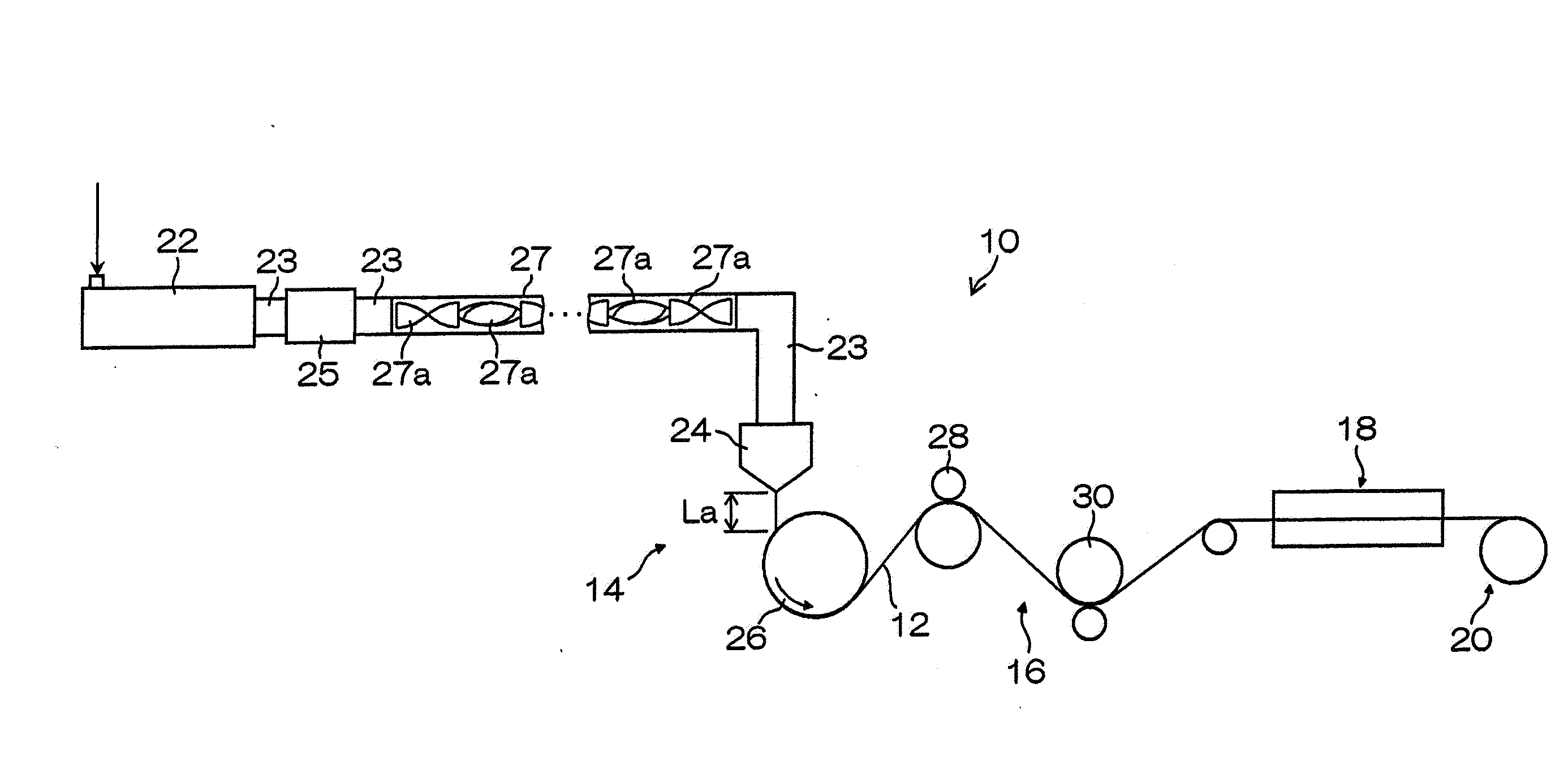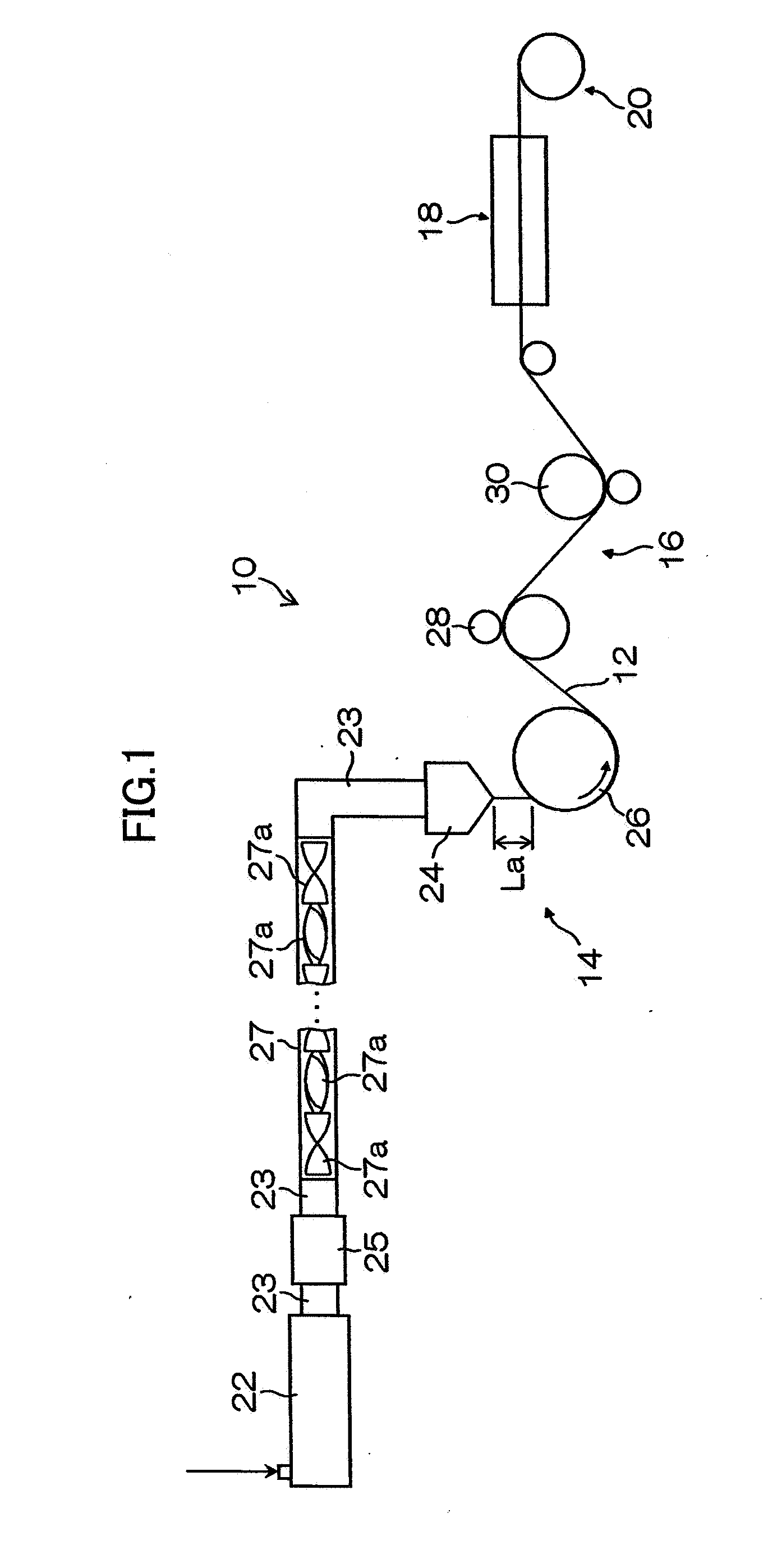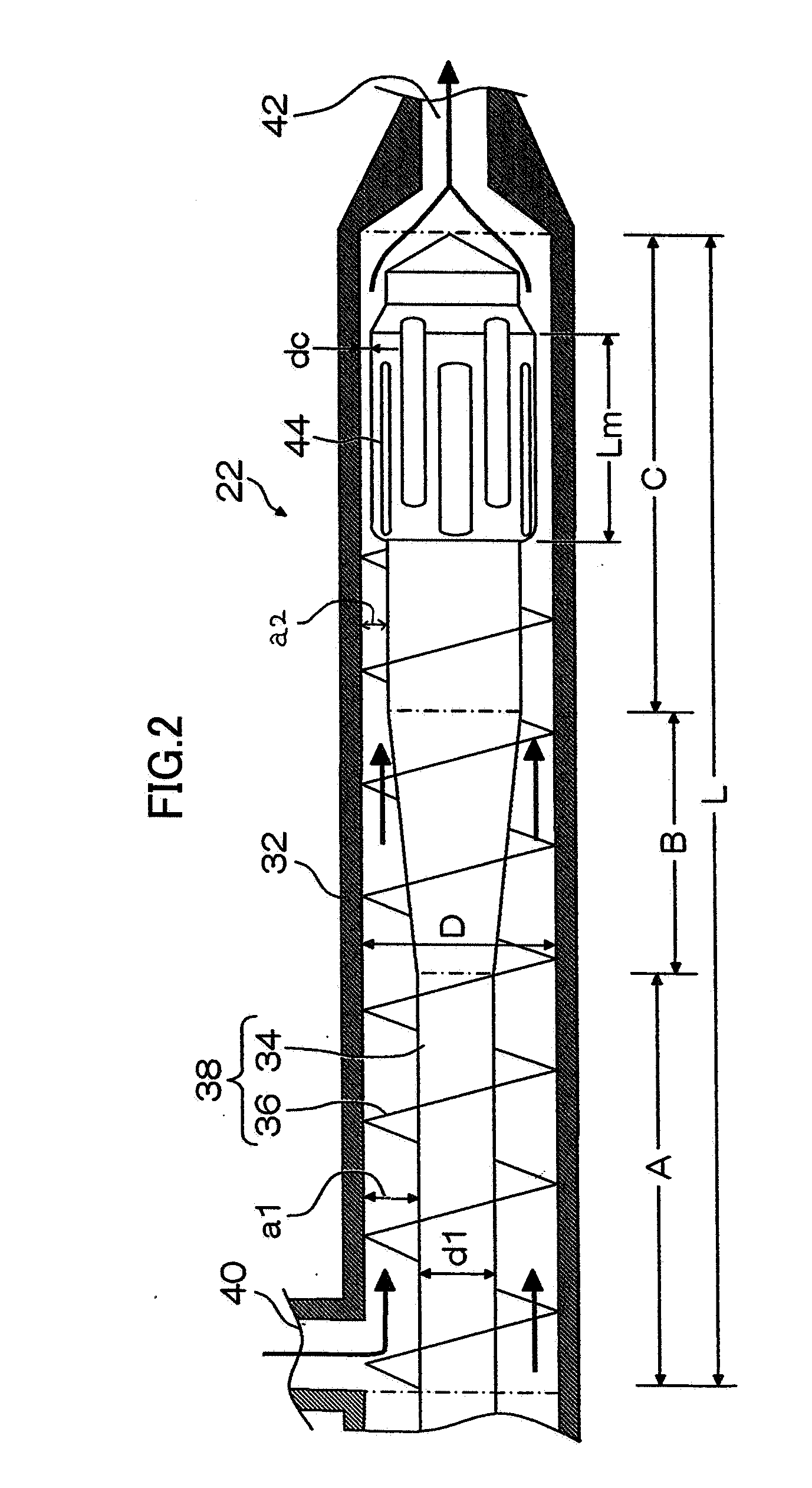Method and apparatus for producing cellulose resin film, and cellulose resin film and functional film
a technology of cellulose resin and cellulose resin film, which is applied in the direction of application, manufacturing tools, transportation and packaging, etc., can solve the problems of cellulose resins generating excessive heat due to friction, cellulose resins causing thermal degradation, and streak failure in cellulose resin films, etc., and achieve excellent optical properties
- Summary
- Abstract
- Description
- Claims
- Application Information
AI Technical Summary
Benefits of technology
Problems solved by technology
Method used
Image
Examples
example 1
[0456]In the extruder 22, the groove depth in the feed section was set at 15 mm, the screw in the compression section was of a double flight type, and a mixing section 44 was provided on the exit side of the screw in the metering section. The mixing section 44 used was of a barrier type, had a extrusion direction length of 1D, and had the clearance dc of 1 mm between each of the leading ends of the mixing elements and the inner wall surface of the cylinder 32. The temperature in the feed section was set at 180° C. The temperature of the screw in the feed section was controlled by using a cast-in aluminum heater and by circulating oil in the screw.
[0457]The number of the stages of the static mixer 27 was 4, the temperature unevenness of the pipe communicatively connecting the extruder 22 to the die 24 was ±1° C. or less. The air gap between the cooling drum 26 and the die 24 was 90 mm.
example 2
[0458]Example 2 was the same as Example 1 except that on the exit side of the screw in the metering section in the extruder 22, a mixing section 44 (barrier type; extrusion direction length: 1D; clearance dc: 1 mm), a full flight (extrusion direction length: 2D) and another mixing section 44 (barrier type; extrusion direction length: 1D; clearance dc: 1 mm) were provided in this order.
example 3
[0459]Example 3 was the same as Example 1 except that on the exit side of the screw in the metering section in the extruder 22, a mixing section 44 (barrier type; extrusion direction length: 2D; clearance dc: 1 mm), a full flight (extrusion direction length: 3D) and another mixing section 44 (barrier type; extrusion direction length: 2D; clearance dc: 1 mm) were provided in this order.
PUM
| Property | Measurement | Unit |
|---|---|---|
| width | aaaaa | aaaaa |
| depth | aaaaa | aaaaa |
| length | aaaaa | aaaaa |
Abstract
Description
Claims
Application Information
 Login to View More
Login to View More - R&D
- Intellectual Property
- Life Sciences
- Materials
- Tech Scout
- Unparalleled Data Quality
- Higher Quality Content
- 60% Fewer Hallucinations
Browse by: Latest US Patents, China's latest patents, Technical Efficacy Thesaurus, Application Domain, Technology Topic, Popular Technical Reports.
© 2025 PatSnap. All rights reserved.Legal|Privacy policy|Modern Slavery Act Transparency Statement|Sitemap|About US| Contact US: help@patsnap.com



